Water Vapor, moisture, and groundwater are strong forces to be reckoned with when attempting to keep a building interior dry. Moisture can migrate via capillary action through pores, shrinkage cracks, joints, utility penetrations etc until they’ve made their way to the interior. Waterproofing protects the passage of water even in saturated or elevated hydrostatic pressure conditions. Waterproofing becomes most crucial when groundwater conditions are more excessive than usual, when a dry subgrade space is important, or when infiltration or exfiltration is particularly undesirable (elevator shafts, basements, below grade tunnels, manholes, precast concrete structures, etc). The most common components that make up a waterproofing product are asphalt compounds, synthetic rubbers, or other plastics. Both above grade and below grade waterproofing products exist, specially formulated for each.


An important facet of waterproofing is by managing the water as much as possible before it reaches the wall. This is often done by a combination of a system utilizing porous backfill material, a drainage board, and an underdrain system commonly running around the perimeter of the structure.
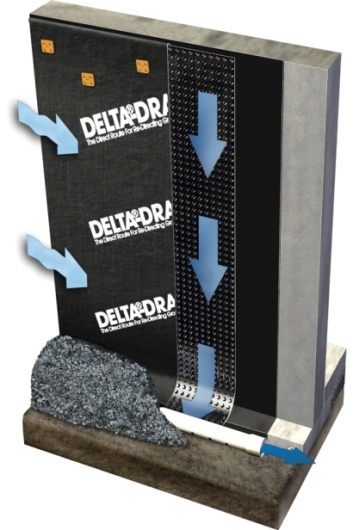


Also (if not integral with the drainage board product) a protection board may be used to prevent damage to the waterproofing during backfill operations.


Waterproofing products are commonly selected based on the following properties of the material: UV stability (if being exposed to sunlight), elongation (ability for the material to ‘stretch’, tear-resistance (often inversely proportionate to elongation), and chemical stability (based on the intended chemical exposure and soil type). Many manufacturers require certified installation in order to provide the manufacturer’s warranty. There are four primary waterproofing products available: Liquid, Sheet-Membrane, Bentonite, Cementious. Below is a description of each type of product, it’s characteristics, and installation.
Liquid Waterproofing
Liquid waterproofing is typically applied by roller, spray gun, or squeegee and takes a set amount of time to ‘cure’ before it is effective or able to be backfilled up to. Liquid waterproofing may be:
-bituminous (asphaltic) compound

-polymer modified bituminous compound
-polyurethane
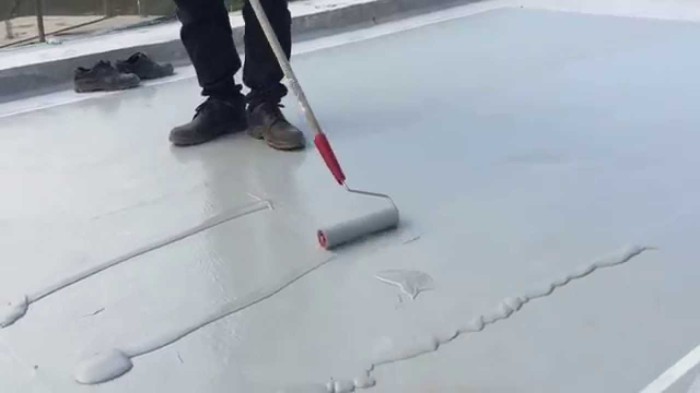
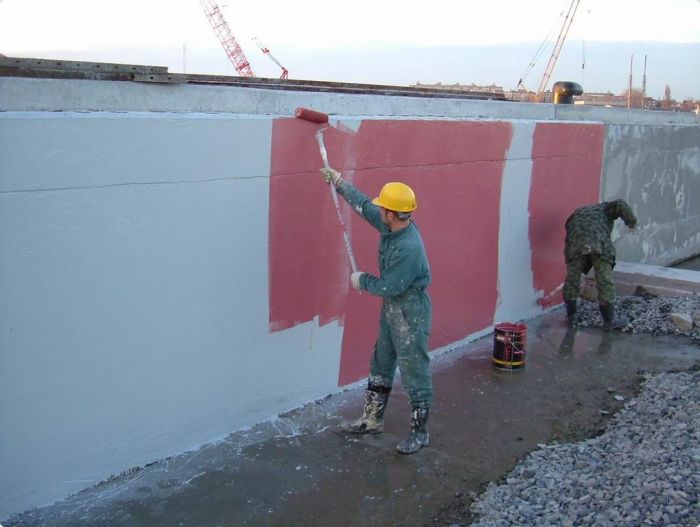
These types of Polyurethanes for example, are known to have hydrophobic characteristics which make them ideal for waterproofing.
Many of these products have specific versions specifically suited for spray, trowel, or rollers. A primer is commonly installed first to assist in adhesion and a smooth suitable substrate.

Then at least two top coats are commonly installed completing the assembly. Liquid waterproofing is typically preferred over other types of waterproofing because it is virtually seamless, but because it is field applied liquid waterproofing can be unevenly applied if proper care is not taken. Also, like any waterproofing type, the surface must be prepared by grinding, filling voids, filleting footer-to-wall joint, cleaning, smoothing, and drying to ensure a reliable adhesion.
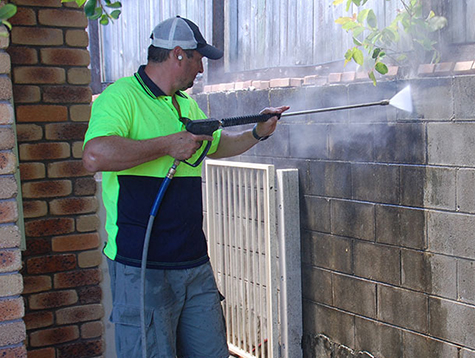
Completing a waterproofing job in one sitting is desirable for most contractors as avoiding a ‘cold’ joint in the material is beneficial to the system, though not essential. Some of the advantages of liquid waterproofing are speedy application, reasonable in-place cost, and good ‘elongation’ or stretching capabilities (sometimes as much as 250% or more). The common application thickness is +/- 60 mils which takes care and skill from an experience installer to achieve consistently along the surface.
Sheet Membrane Waterproofing

Sheet membrane waterproofing is a preformed material that is self-adhered, heat-fused (torch applied), or mechanically fastened to it’s intended substrate. Some of the advantages of sheet membrane are it’s reliably uniform in thickness, durability, and quality. Some of the disadvantages are difficulty forming around complicated shapes, utility penetrations, and tight areas. Also the sheet seams sealed in the field can be prone to system weakness and failure.

Bituminous waterproofing is the most commonly used below-grade sheet waterproofing material and is most commonly attached to the substrate with blow torches or heat guns.

Bituminous waterproofing is very commonly overlapped 4″ at the joints and relies on near perfect joint execution to remain effective over the expected life. Also newly formulated acrylic, polymer-modified bituminous, polyvinyl chloride, and polyurethane products have begun to show increased durability and popularity.
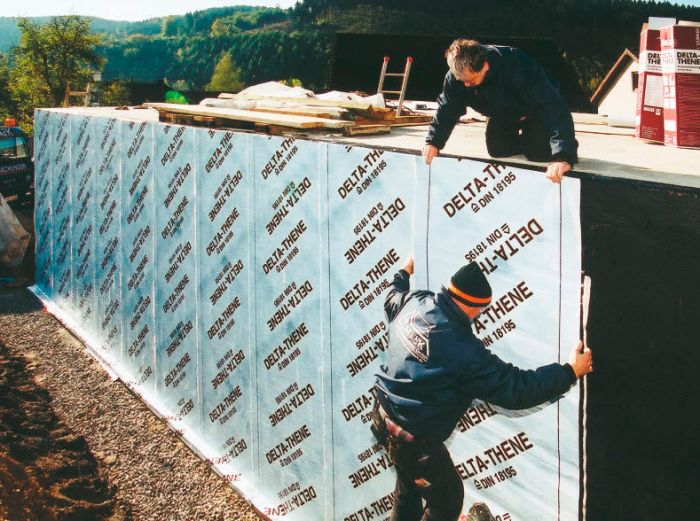
These sheets have a fabric base (strength and tear resistance), with the waterproofing chemical coating. Sheet membranes become useful for locations where mechanical fastening can be utilized when achieving a good liquid product bond is not practical. Also sheet membrane is arguably more resistant to shearing overtop of movement or cracking than most liquid applied membranes. One of the more common sheets used currently is self-adhering rubberized asphalt membranes.


These products are commonly +/- 60 mils in thickness and are made of rubberized asphalt with a polyethylene waterproof film laminated to the outer-facing sheet surface. These products have a release paper on the asphalt side which when removed yields an incredibly sticky surface.
Bentonite Waterproofing
Bentonite waterproofing is made of sodium bentonite, which is an moisture-driven expanding clay that is found naturally occurring. The most typical application on a flat surface is a sandwich board of clay surrounded by cardboard, geotextile fabric, or sheets of plastic. When exposed to water, bentonite expands to several times and creates a barrier to the passage of water.

Bentonite sheets are often utilized horizontally under slabs and placed right on the sub-base to be activated by the moisture in the wet concrete.
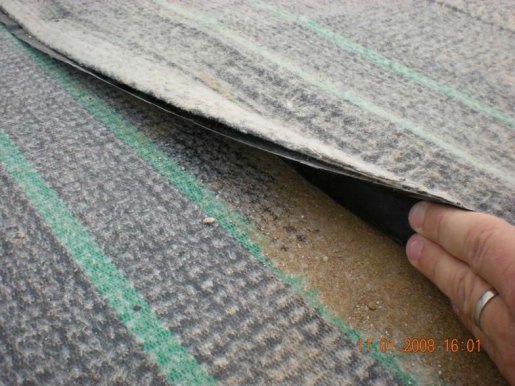

Bentonite sheets are also commonly applied mechanically (nailed, powder-actuated fastened, or masonry anchored) to concrete walls.

Lastly, sprayed bentonite slurry is commonly used as well, particularly on uneven surfaces or stone walls.

Bentonite waterproofing is advantageous because as substrates move over time and crack, bentonite will typically continue to expand inside the crack, continuously waterproofing the structure. Bentonite’s disadvantage over other products is the fact that the system engages only after backfilling and exposure to water. Many waterproofing contractors do not like this as it doesn’t allow the system to be inspected, infiltration tested, and blessed before backfilling, making excessive warranty issues and callbacks an added liability. There are many proprietary bentonite products available with other waterproofing membranes (butyl rubber, synthetics, etc) working in tandem with the bentonite to form an exceptionally strong and waterproof barrier. The following are some common bentonite waterproofing types and their typical applications:
-High-swell bentonite sand mixture: horizontal applications; pond water containment, sewer lagoons, landfills, decorative garden ponds.

-Geotextile bentonite sheets: geotestile (one-woven and one non-woven) sandwiching bentonite core; used for below grade slabs and vertical walls.

-Bentonite Panels: corrugated kraft-paper boards; split slab waterproofing, backfilled concrete and masonry walls.
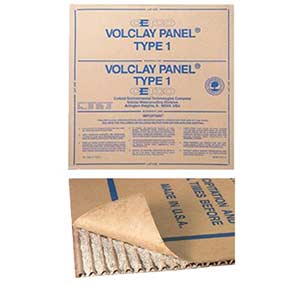

-Spray-Applied Membrane: typically combined with asphalt binder or polymer enhanced; used on below grade slabs, vertical walls, complex shoring systems.
-Trowel Grade – trowelable mastic; used for application at joints and utility penetrations.

Cementious Waterproofing

Cementious waterproofing is typically fairly easy to install and are typically sold where masonry materials are sold. They’re commonly pre-mixed and only need blended with water before application. Acrylic additives are commonly used and are very useful in making the product more workable and elastic during installation. Cementious waterproofing is only meant for concrete or masonry surfaces, and the products are usually brushed or troweled on but are commonly spray applied for larger application areas.

They are considered more of a light duty product as they have very little tensile or flexural strength, and are geared mainly towards hydrostatic pressure resistance. WHen being applied in situations where differential movement or cracking is very unlikely, cementious waterproofing can be an effective and valuable product choice. It is also sometimes used on exposed concrete where a smoother, more decorative finish is desired. Surface prep includes laitance removal, void or honeycomb filling, chemical or mechanically etching overly smooth surfaces, and surface drying to a damp state. Ideal application temperatures are most commonly 40-90 degrees fahrenheit. Like concrete, cementious waterproofing must be kept from excessive heat and wind to avoid drying out before curing. Material properties that are often considered when choosing the right product are: permeability, compressive strength, tensile strength, shear strength, flexural strength, bond strength, vapor transmission, abrasion resistance, freeze/thaw resistance, chemical resistance, and UV resistance.